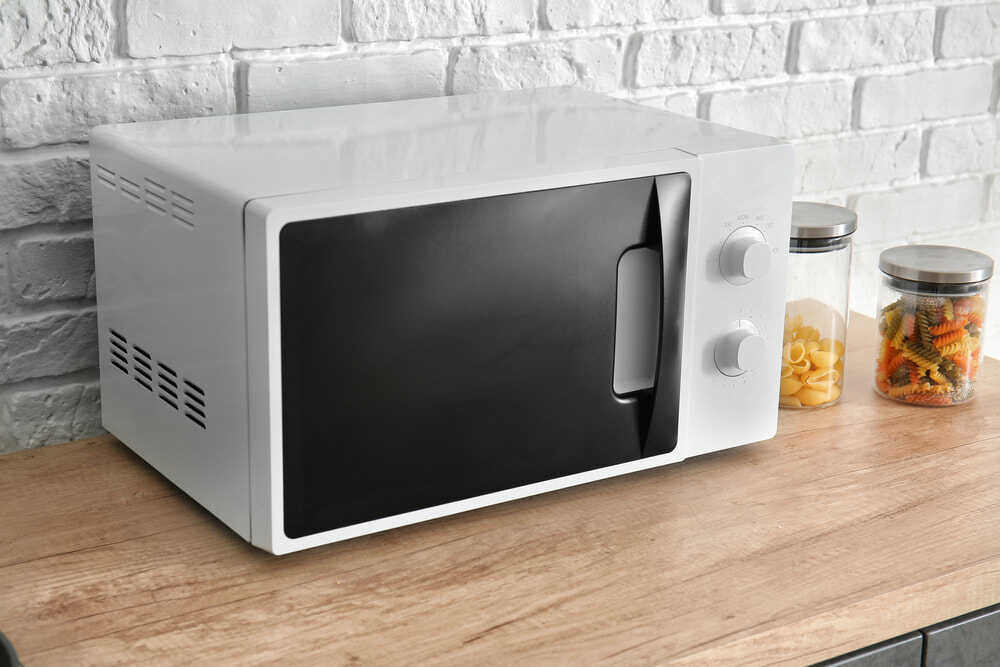Keeping your microwave clean is essential for both hygiene and optimal performance. No one wants to deal with lingering odors or unsightly stains. In this article, we’ll guide you through the steps to clean your microwave quickly and correctly. So let’s get started!
Making Your Microwave Shine Inside
Cleaning the interior of your microwave is crucial to remove splatters and odors. Here’s a simple method you can try:
- Grab a microwave-safe bowl and combine one cup of water with slices of lemon, lime, or orange. Squeeze the juice from the fruit slices into the water.
- Alternatively, mix a few tablespoons of white or apple cider vinegar with one cup of water in the microwave-safe bowl.
- Place the bowl in the microwave and heat it on high power until the mixture boils and the window steams up.
- Let it cool for about 5 minutes, then carefully remove the bowl and use a sponge to wipe down the inside of your microwave.
Giving the Exterior Some TLC
Don’t neglect the outside of your microwave! Here are some tips to keep it looking clean and grease-free:
- To remove smudges and grease from the door, grab a damp sponge dipped in baking soda and clean the entire door, including the edges and where it seals the oven. Rinse with a damp cloth or sponge.
- If there’s a greasy window, create a 50/50 solution of water and vinegar. Use this mixture to clean the window, then rinse and pat dry.
- For heavy grease buildup and stubborn splatters, use an all-purpose, grease-cutting cleaning solution or create a sudsy mix of dish soap and water. Apply the cleaner with a wet cloth to avoid it getting into the vent holes. If needed, scrub with a non-scratch pad. Remember, never spray cleaner directly onto the electronic controls—always use a cloth.
Removing Lingering Odors
Sometimes, your microwave may retain unpleasant smells. Follow these tips to banish those odors:
- For light odors, like those from spicy snacks, simply leave the microwave door open or place a bowl of baking soda inside and firmly shut the door. The baking soda will absorb the smells.
- If the odor persists or is strong, clean any leftover residue and place an odor-absorbing gel inside the microwave until you need to use it again. This is particularly effective for odors caused by burnt popcorn or other strong-smelling foods.
Preventing Future Messes
While cleaning your microwave is important, it’s even better to avoid spills and messes altogether. Here’s what you can do:
- Cover your dishes with a microwave cover to prevent spills.
- Use lower power settings when heating messy foods.
- Place a paper towel or plate over the food to prevent splatters.
- Put a plate underneath bowls and dishes to catch any spilled food.
- Clean up spills immediately to prevent them from hardening and becoming difficult to remove.
Following these preventive measures will go a long way in keeping your microwave cleaner and minimizing the need for deep cleanings.
How Often Should You Clean Your Microwave?
To keep your microwave hygienic and fresh, aim to clean it once a week or every three to four weeks. If you frequently heat messy foods, you may need to clean it more often. On the other hand, if you rarely use your microwave, you can go up to a month without cleaning it. Just remember not to let the grime accumulate for too long.
A Word of Caution
While it may be tempting to use oven cleaner in a microwave, avoid doing so. The finishes inside a microwave are different from those in an oven. Stick to gentle cleaning methods using soap, water, and vinegar for an effective deep clean.
How Long Will Your Microwave Last?
With proper maintenance and regular cleaning, most microwaves can last up to ten years. So take care of your microwave, and it will serve you well for a long time.
Conclusion
Cleaning your microwave doesn’t have to be a daunting task. With these simple and effective tips, you can have a spotlessly clean microwave in just three minutes. Give it a try and enjoy a fresh and hygienic cooking experience!
Do you have any additional microwave cleaning tips to share? We’d love to hear from you! Leave a comment below and let us know if these tips worked for you.

